What Vermont Animal Is Most Related To Raccoons
Vermont is a small state known for its rolling hills, dairy farms, and scenic rural scenery. The state'south population is about 626,000. Vermont has over 4 meg acres of woods, which is more than than 75% of the state. Another 15% of the land's land is dairy farms. That accounts for the cute scenery, sparse population, and abundant wildlife.
Home to hundreds of bird species, it is also home to many migrating birds who stop on their way south. Its many forest mammals include foxes, bobcats, raccoons, muskrats, and blackness bears. Rodents, rabbits, and opossums are all native to the country. Frogs and toads are abundant, and you lot can hear them sing in the famous "spring chorus" that heralds the arrival of warmer weather condition.
The Official Animal of Vermont
The Morgan horse (Equus cabullus morganensis) was named the state's official animal in 1961. This beautiful brood of horse is one of the earliest breeds developed in the U.Due south. In 1907, the U.S. Department of Agriculture established the U.South. Morgan Horse Subcontract in Middlebury, Vermont. It is now owned by the University of Vermont.
The Morgan equus caballus is the state horse of Massachusetts and the state mammal of Rhode Island. Vermont poet Robert Frost wrote almost "a little Morgan" in his poem The Runaway.
Where To Notice the Pinnacle Wild Animals in Vermont
Wild fauna is everywhere in Vermont, and you can see wild animals in every season and every part of the country. If you want to see moose, visit the bogs and wetlands areas in the autumn, which is the mating flavour for these huge ungulates. Victory Basin Wild fauna Management Surface area and Conte National Wildlife Refuge are neat places to see them.
I of the world's largest goose migrations happens every autumn as thousands of snow geese and Canada geese make their way 5,000 miles from the Arctic to the southern U.Southward. In Vermont, they stop at Expressionless Creek Wildlife Management Area.
Also geese, this is a corking place to spot northern saw-whet owls, peregrine falcons, snowy owls, wild turkeys, and woodpeckers. You can as well spot rodents, greyness foxes, river otters, and southern bog lemmings. If you lot like reptiles and amphibians, you'll run across mudpuppies, garter snakes, eastern newts, common water snakes, and painted turtles.
Vermont's ponds are home to common loons, whose call is famous for its haunting, musical quality. Loons well-nigh became extinct in Vermont, just conservation efforts have helped their numbers abound. Any pond surrounded by wilderness is a good place to listen for loons, merely wild animals experts recommend keeping a altitude to avert disturbing the birds.
Vermont holds a Christmas Bird Count between December and January to tally the number of bird species in the country. Birders of all levels take part in identifying the number of cardinals, grosbeaks, owls, ravens, and other birds in the land.
The Well-nigh Unsafe Animals in Vermont Today
Although Vermont has some fierce predators, virtually of them are harmless to humans.
- Deer tick: This tiny bloodsucker transmits many diseases, including Lyme's disease. Vermont's wild woods are filled with them, so it'due south important to wear protection and check yourself later on a hike or walk in the woods.
- Moose: Although almost moose avoid humans, they can go if they feel threatened. Avoid agonizing a moose that is mating or protecting its young.
Endangered and Extinct Animals in Vermont
Vermont passed its own endangered species laws decades ago. Since then, information technology has seen recoveries of peregrine falcons, loons, and ospreys. There are still some endangered species on the state authorities'due south listing:
- Baldheaded eagle
- Little brown bat
- Timber rattlesnake
- Rusty-patched bumblebee
- Dwarf wedge mussel
- Canada lynx
- Spiny softshell turtle
- Lake sturgeon
Wolves were in one case widespread in Vermont, merely now they are extinct in that location. There are wolves on the country's border with Canada, and wildlife biologists promise wolves will be reintroduced to Vermont.
The slender, true cat-similar marten is a member of the weasel family that's native to Vermont. In one case extinct, martens have been successfully reintroduced.
Vermont claims to be 1 of the native homes of the strange creature known as a sidehill absconder or a wampahoofus. In fact, Vermont has a trail in ane of its national parks called Wampahoofus Trail. Sidehill gougers were mount-dwelling mammals that were half deer and half boar. Although these animals appear in folklore, there is no evidence the foreign mammals always existed.
State Where Nature is Safe
Vermont has many wild places where wild fauna thrive. Its forests, dairy farms and scenic ponds are habitation to a wide diverseness of foreign and beautiful animals. Visitors to the state take many opportunities to see wild fauna in its most natural state.
More Read
Read nearly:
- the most breathtaking waterfalls in Vermont.
- The five States with the Most Dangerous Blizzards (Vermont is one of them!)
Vermonter Animals

Armyworm
They are so named because they "march" in armies of worms from 1 crop to another in search of food

Eastern Rat snake
Rat snakes are medium-to-large, nonvenomous snakes that impale past constriction.
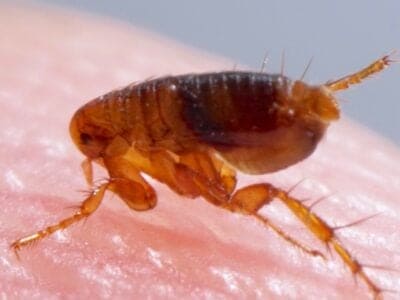
Flea
Developed fleas can bound up to 7 inches in the air
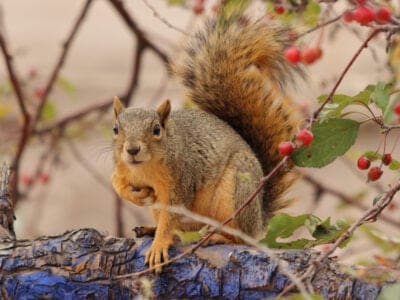
Fox Squirrel
Although information technology is a tree squirrel, it spends most of its time on the basis.


Mealybug
They take a symbiotic human relationship with ants.
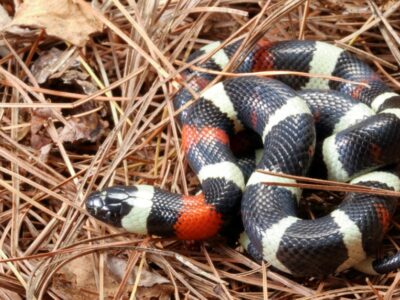
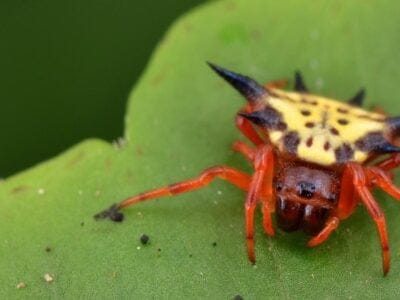
Orb Weaver
Females are about four times the size of males
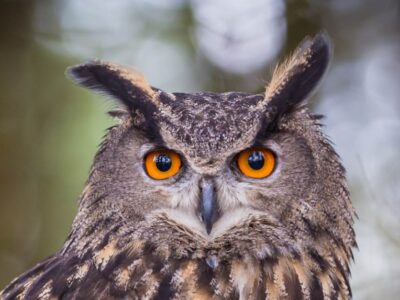
Owl
The owl tin rotate its head some 270 degrees
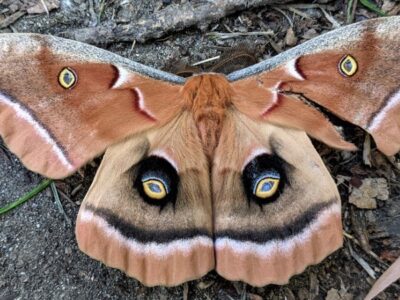
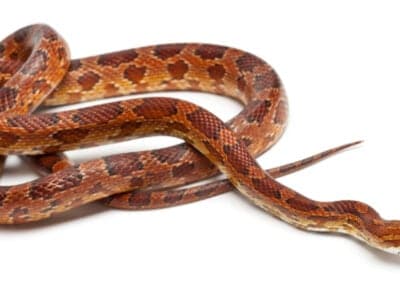
Rat Snakes
Rat snakes are constrictors from the Colubridae family of snakes.

Rooster
Will mate with the entire flock!
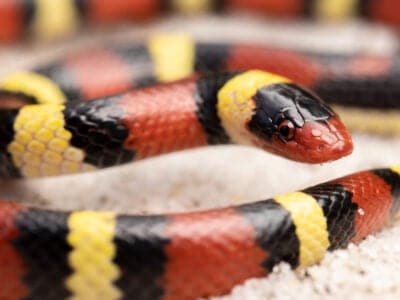
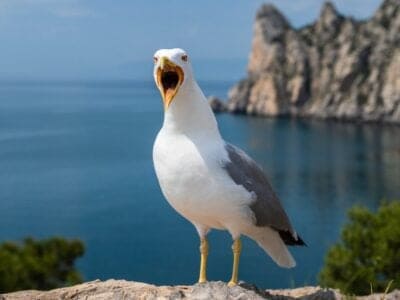
Seagull
Some gulls are capable of using tools
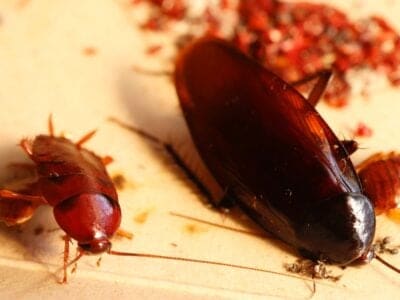
Vermonter Animals List
- Armyworm
- Eastern Rat snake
- Flea
- Fox Squirrel
- Groundhog (Woodchuck)
- Mealybug
- Milk Snake
- Orb Weaver
- Owl
- Polyphemus moth
- Rat Snakes
- Rooster
- Scarlet Kingsnake
- Seagull
- Smokybrown Cockroach
Animals in Vermont FAQs (Oftentimes Asked Questions)
What Animals Live in Vermont?
Vermont has many wild areas, and it'due south piece of cake to see all kinds of animals. Bears, wolves, and eastern coyotes prey on rabbits, voles, and snowshoe hares. Moose, beavers, and white-tailed deer live in the forests. Its rodents include squirrels, mice, and gophers. Opossums, porcupines, and river otters live by the streams forth with loons and other aquatic birds. As a largely rural state, it is dwelling house to many of the most iconic woodland animals of the northeastern states.
Vermont too has a high number of dairy cows and dairy goats. Since 1970, the tiny state of Vermont has produced i.3% of the milk consumed in the U.S.
What Dangerous Animals Alive in Vermont?
Moose, black bears, and wolves tin can be dangerous if you provoke them. Vermont's most dangerous animals, however, include deer ticks, and mosquitoes.
What aquariums are in Vermont?
Vermont is home to two different aquariums. One is Repeat, which can exist constitute in Burlington and features a shipwreck recreation. The other aquarium is located in Norwich and is named the Monstshire Museum of science.
What Big Predators Live in Vermont?
Vermont's largest predator is the eastern coyote (Canis latrans). This coyote is larger than its western cousin because it is a cantankerous between a coyote and a wolf. Information technology is also quieter and tends to just "yap" at dawn and dusk. It feeds on modest mammals and rodents. Most of Vermont's coyotes stay in forested areas and rarely interact with humans.
Vermont'southward other predators include the eastern bobcat (Lynx rufus rufus) and the Canada lynx (Lynx canadensis canadensis). Bobcats are plentiful, but information technology'south rare to see them because they are very shy. The Canada lynx is a native Vermont big true cat that is critically endangered in the land.
Does Vermont Have Mountain Lions?
No, in that location are no mountain lions in Vermont. Periodically, people in Vermont report seeing big, true cat-like animals in the woods that they think are mountain lions or catamounts, every bit they are known locally. Co-ordinate to wildlife biologists, these sightings are nigh probable bobcats.
Are There Wolverines in Vermont?
At that place are no wolverines in Vermont.
Some people who claim to take seen wolverines there take probably seen a fisher (Pekania pennanti). A fisher is a small-scale, omnivorous mammal that lives in the forests and is related to weasels. Cat-like fishers are excellent climbers and skillful hunters who prey on snowshoe hares and porcupines. In the 19th century, fishers were hunted almost to extinction, but now they are abundant in the northern U.S. states.
How Many Serpent Species Live in Vermont?
There are 11 snakes in Vermont. The timber rattlesnake is the only venomous species found in the country. The rest, including the mutual garter snake, eastern rat serpent and North American racer, are harmless to humans.
What spiders live in Vermont?
Spiders in Vermont include everything from the daring jumping spider and the deadly basis crab spider to the common house spider. Many others alive there too, similar the six-spotted fishing spider that can catch fish more than 5 times their size!
Source: https://a-z-animals.com/animals/location/north-america/united-states/vermont/
Posted by: hutchesonmationdeed.blogspot.com

0 Response to "What Vermont Animal Is Most Related To Raccoons"
Post a Comment